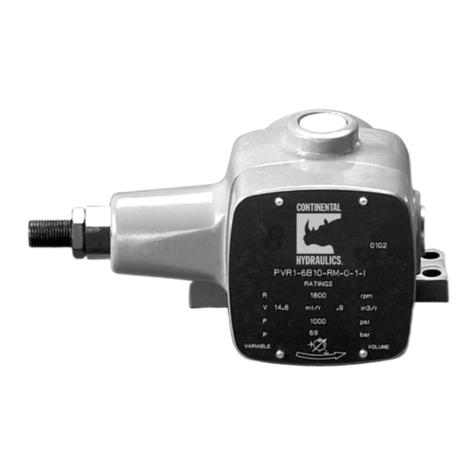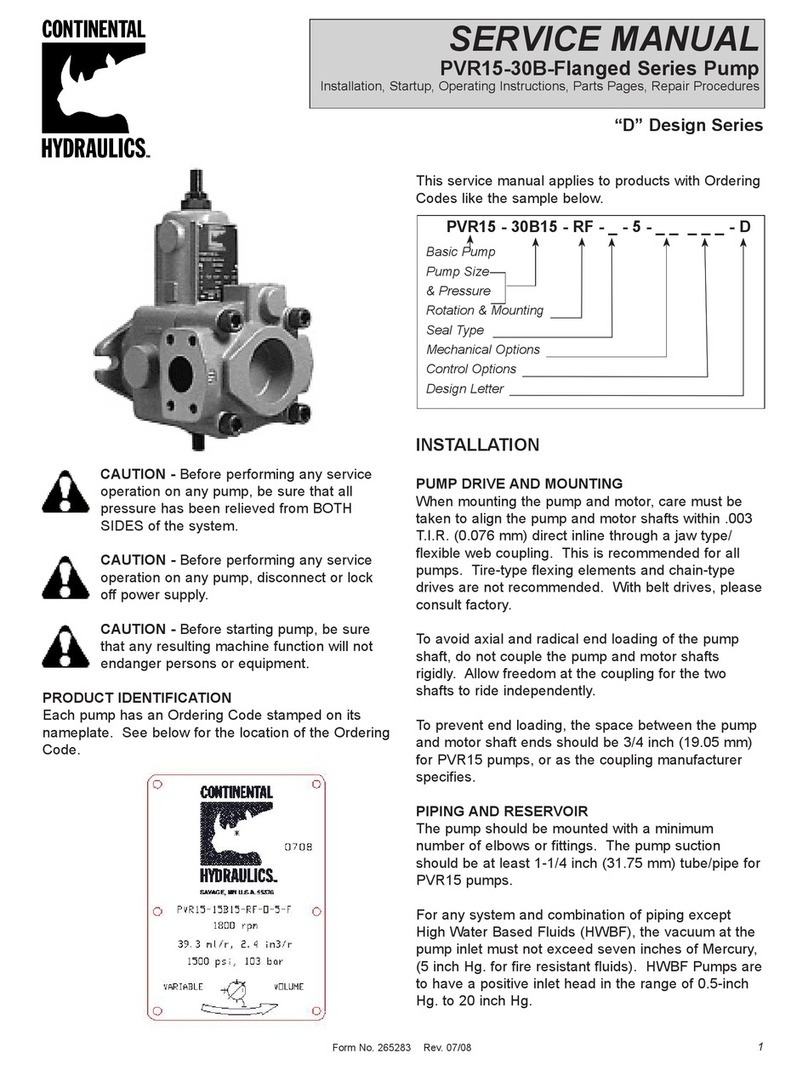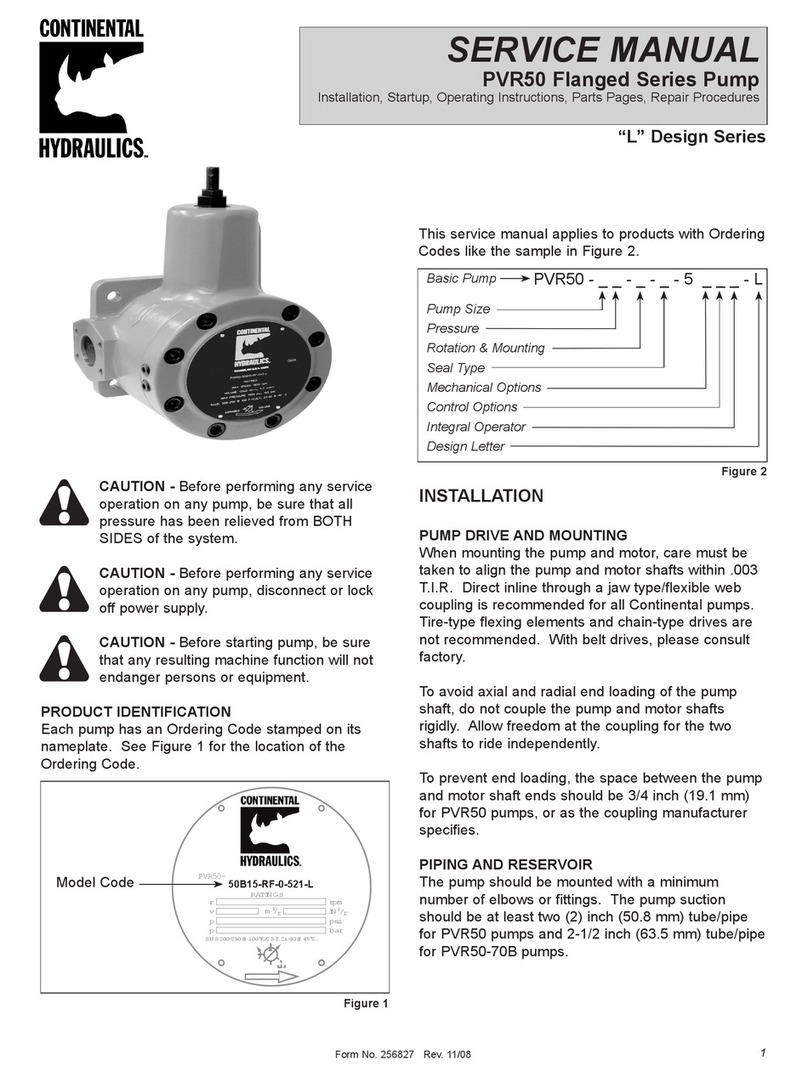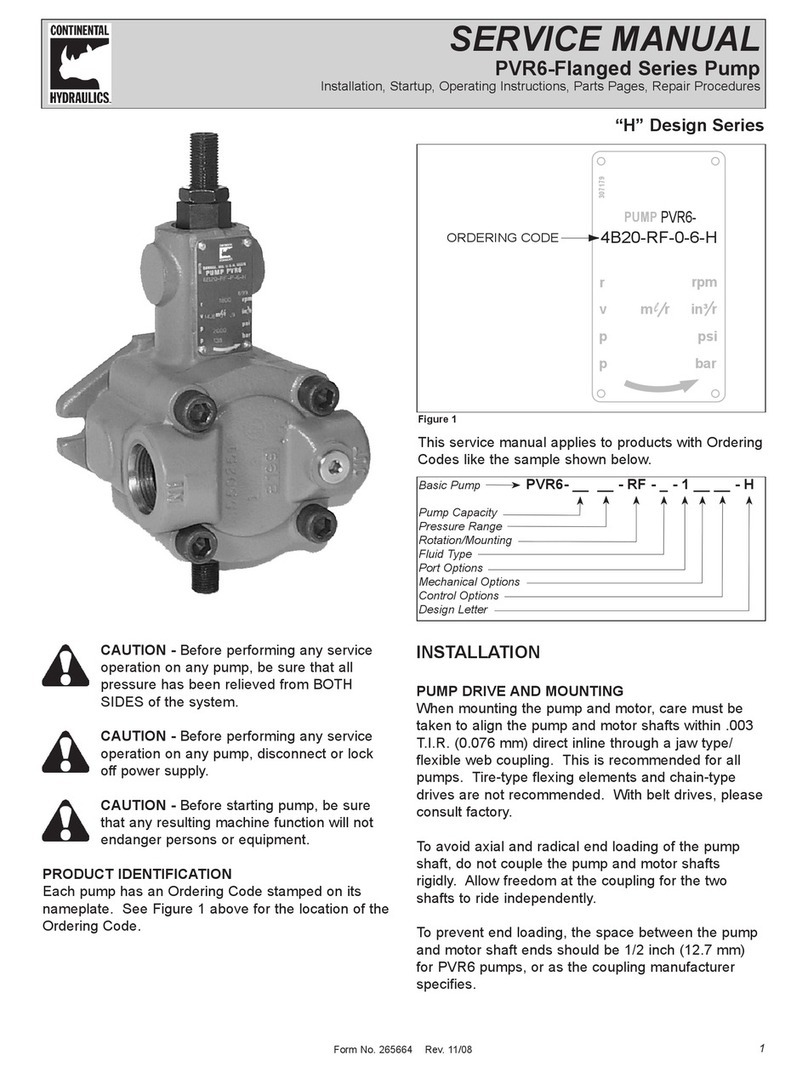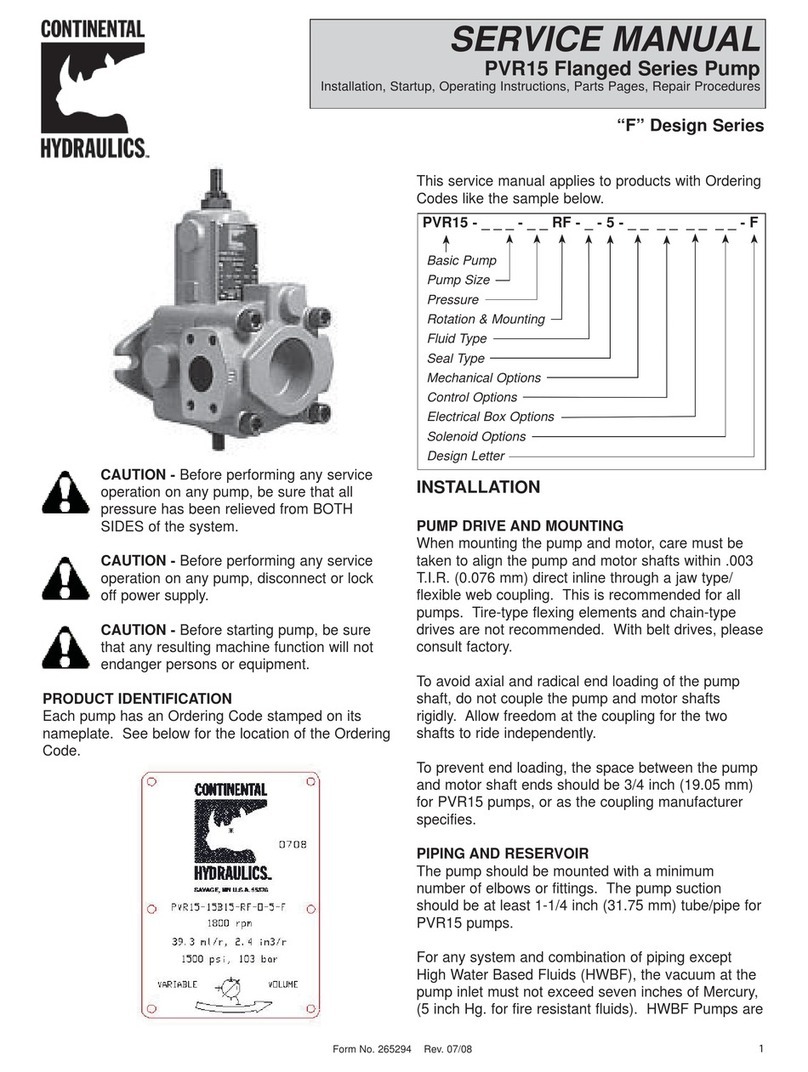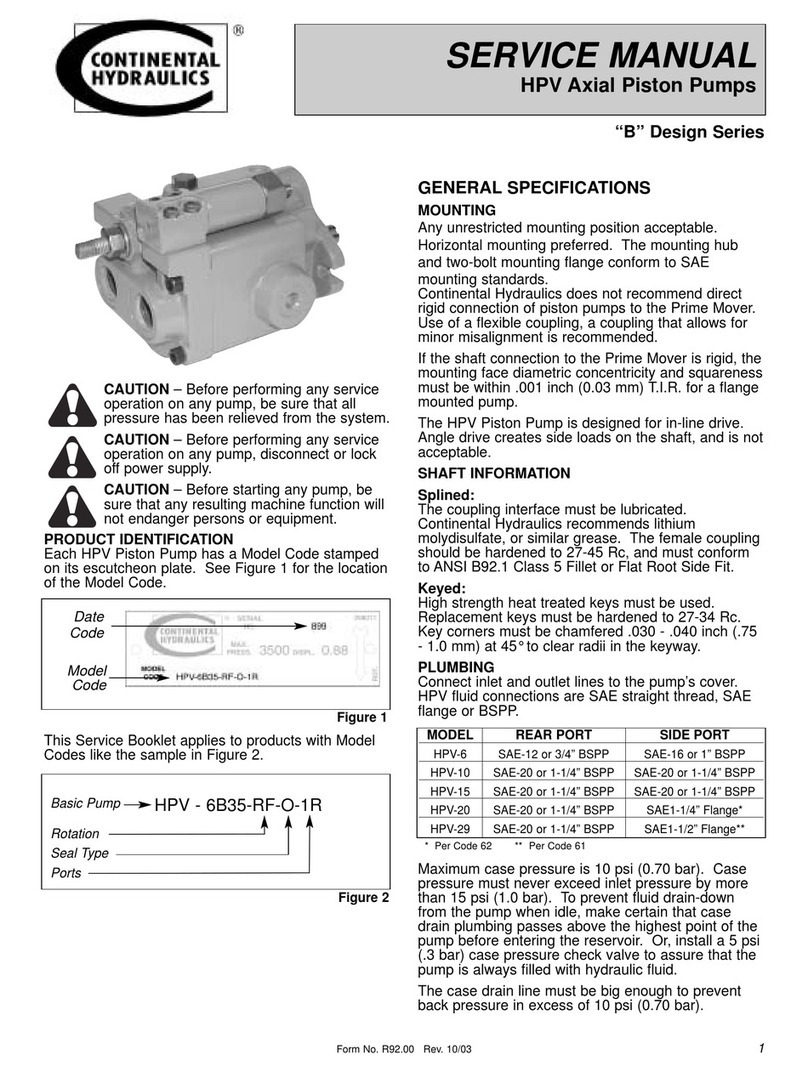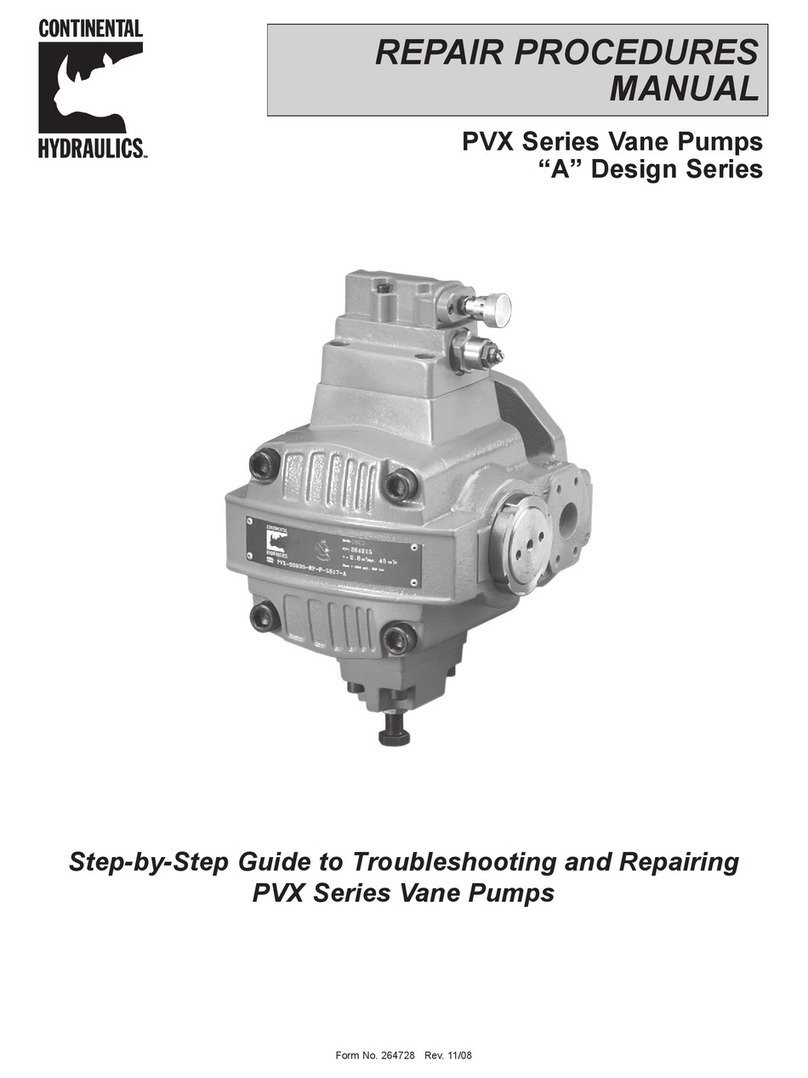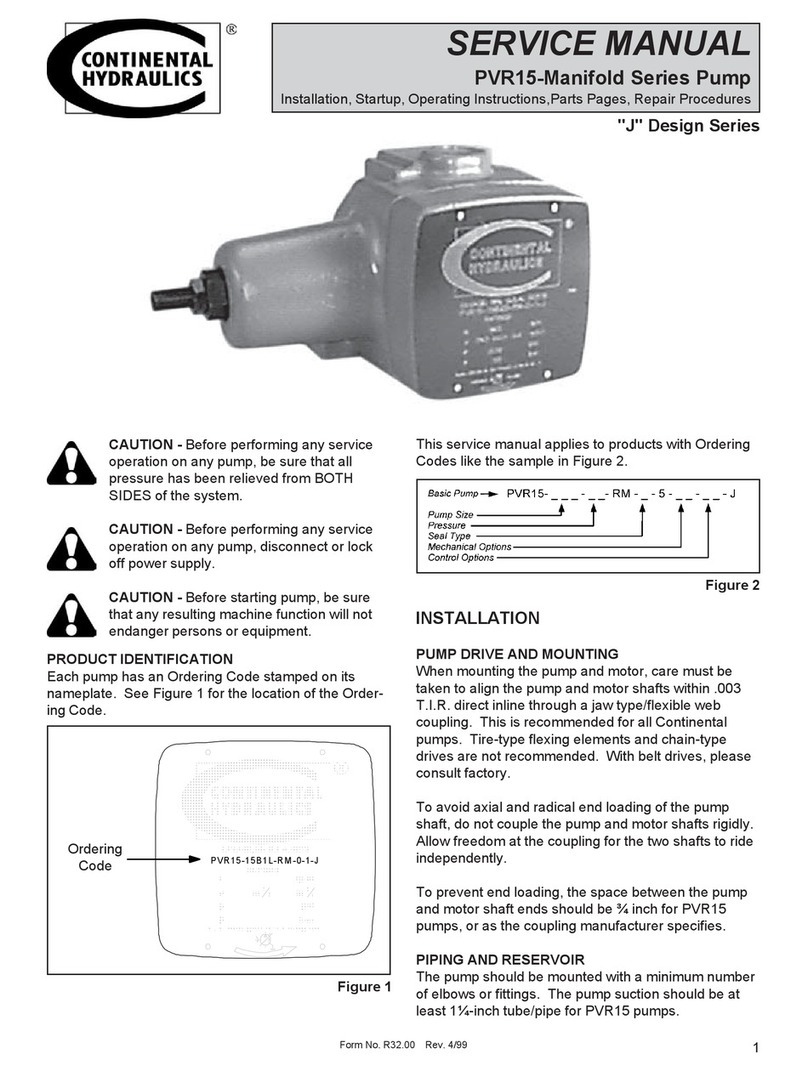
2
One indicator rides on the inside face of the pump
coupling. Measuring parallel offset alignment, as in
Figure 4, Proper alignment is achieved when neither
indicator varies more than 0.006 inch (0.152 MM) dur-
ing one complete shaft revolution.
CAUTION - THE COUPLING SELECTED
SHOULD PROVIDE A CLEARANCE FIT ON
THE PUMP AND MOTOR SHAFTS.
Never use couplings with interference or
sweat fits. Do not press jaw coupling hub together
tightly. Allow air gap between hub and insert to pre-
vent end thrust into pump rotor, which will damage
the pump. No external forces (other than rotational)
should be applied to the shaft.
INSTALLATION
Careful attention to the following installation require-
ments will assure satisfactory operation of your PVX
hydraulic pump. The pump should only be installed
by qualified personnel. Please read this bulletin care-
fully for detailed steps to install this equipment
1. REMOVE ALL PLASTIC PROTECTIVE CAP
PLUGS FROM COMPONENT BEFORE
INSTALLATION.
2. Prior to installation, pour a small amount of clean
hydraulic circuit fluid into the pump inlet port and
rotate the pump shaft by hand in the direction indi-
cated by the arrow cast into the pump body (all
PVX pumps rotate from thrust block to compensa-
tor). This insures lubrication at initial start-up.
3. Mount the pump and drive motor to a rigid base not
more than three feet above the fluid level.
4. Align the pump shaft to within 0.006 inches (0.152
mm) Full Indicator Movement (F.I.M.) of the motor
shaft, as in one of the two procedures outlined on
the cover page of this bulletin.
5. Carefully connect the inlet, outlet and case drain
plumbing to the pump. Do not force hard piping to
align with the pump ports. This may pull the pump
out of alignment with the motor.
The inlet line must be plumbed full size to within
three inches of the bottom of the reservoir.
PVX Models: Case flow on all PVX pumps exits
through the port located on the pump body. PVX
8/11/15 models also have an external shock clip-
per drain port located on the compensator that, if
used, must be plumbed. PVX 20 through PVX 75
models have internal shock clipper drains and no
additional plumbing is necessary.
Electric Motor Shaft
Dial Indicators
Figure 4
When installing the case drain plumbing, do not
install the flared portion of any fitting into the case
drain port. Using flared fittings in this manner will
block case drain flow causing shaft seal failure.
The case drain line must also be plumbed to within
three inches of the bottom of the reservoir. The
case drain and main system return lines must be
separated from the pump inlet line by a baffle. The
baffle causes all return flow to travel the length of
the reservoir before re-entering the pump. allowing
for heat dissipation and de-aeration.
6. Fill the reservoir with fluid
INITIAL START-UP
1. Rotate the shaft by hand, in the direction of the
cast in arrow, to insure freedom of rotation.
2. To prime the pump on initial start-up, it is impera-
tive to clear all air from the pumping chambers
first. To do this, open center valving should be
immediately down-stream of the pump outlet port,
which allows all flow (fluid and air) to pass directly
to tank upon start-up. If open center valving is not
included in your circuitry, position your valving to
move cylinders and/or motors in a no-load condi-
tion (75 to 150 psi, 5.2 to 10.3 bar) until the pump
has primed. This “no load” condition is not a pump
compensating pressure value, but is strictly the
result of system resistance.
Another way to clear air from the pumping cham-
bers and prime the pump is to incorporate an auto-
matic air bleed valve in the pump outlet port, or as
close to the outlet port as possible. This valve will
automatically open to allow air to exit to tank upon
start-up. Once all air contained in the pump has
been purged, the valve will automatically close.
3. All PVX Pumps incorporate a volume control.
Continental recommends not reducing the pump’s
output flow by more than 50 percent on start-up
(pump flow is reduced by turning the adjustment
screw clockwise). Once the pump is running, the
volume can be adjusted down to as low as 20 per-
cent of maximum volume at maximum RPM.
4. Jog the motor (no more than 10 revolutions if pos-
sible) and observe the direction of rotation. If the
pump shaft is not rotating in the direction as the
cast arrow on the pump body indicates, reverse
direction of rotation of the motor.
If rotation is correct, continue jogging the motor
until the pump has primed. You will notice a defi-
nite pump tone change and pressure gauge move-
ment when the pump begins to prime. Pressure
adjustments can be made after priming the pump.
5. Pressure adjustments must be made against a
blocked or dead-headed system (cylinders and/
or motors stalled or valving shut off). Increase
pressure by turning the pressure adjustment knob
clockwise. Decrease pressure by turning the pres-
sure adjustment knob counter-clockwise. Pump
pressure setting should be as low as possible, yet
high enough to insure satisfactory machine
performance.
CRITICAL SHAFT ALIGNMENT (Continued...)
